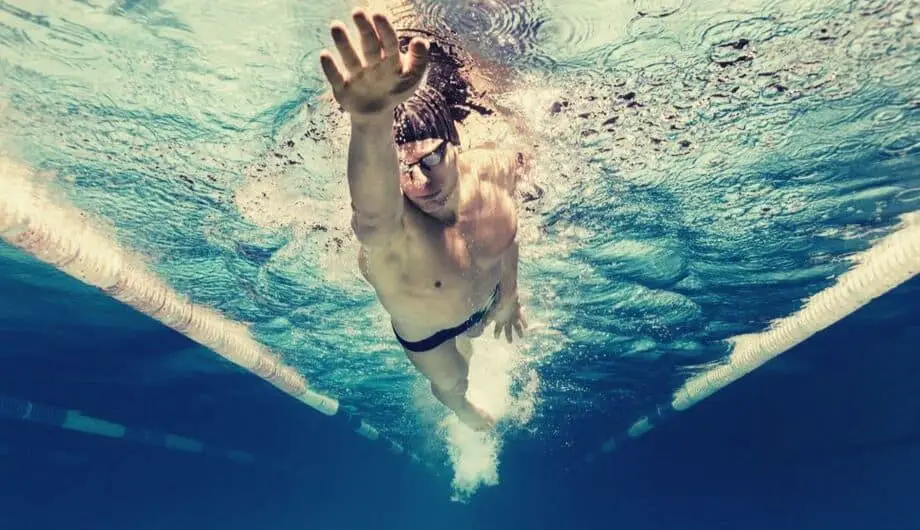
Swimming provides a refreshing break during the summer. It can be an extremely relaxing activity while feeling weightless on your floating. On the other hand, it can be a fast-paced exercise. Swimming is a good all-around activity that takes some of the impact stress off your body. It builds endurance, muscle strength and cardiovascular fitness. Making it a popular sport and a water workout providing a firm body resistance without impact.
Swimming as your main workout gives your entire body a great challenge. A perfect aerobic activity, like your heart, keeps pumping as you use your entire body to move through the water. It improves your flexibility without putting pressure on your joints. In gaining these swimming benefits, a swimmer needs proper training and techniques and one of them is being knowledgeable in swimming styles and stokes.
Whether you take swimming as a regular exercise, your professional sport or training for safety purposes, knowing the different types of swimming styles leads to your advantage. Different stokes provides a more comprehensive workout good for specific muscles, so learning all the swimming styles leads to overall body activity. For athletes, it helps them gain versatility in competing with multiple swimming events. A trained swimmer must also know what stoke or style should be used depending on the emergency situation of a particular situation.
Here Are 8 Different Swimming Styles and Strokes:
Freestyle/Front Crawl
The most common and favorite swimming style of experienced swimmers and athletes. The freestyle stroke or the front crawl style is the most efficient and the fastest swimming strokes. It is the first swimming stroke when you think of when you picture swimming.
To swim freestyle or front crawl, you assume a streamlined prone position, the horizontal position facing down, in the water. Start by pushing off from the wall of the pool. Stretch your arms straight in the front of you like you were diving and glide as far as you go. One arm moves backward in the water from an overhead position towards the hip and provides propulsion. The other arm recovers above water from the hip towards the overhead position. Then, your arms switch position.
Once you’re settled in, add your kick while your body and legs are still straight and relaxed. Your feet should only be moving while keeping your legs relatively motionless. Kick your feet in an upward-downward motion and keep your ankles relaxed while doing this. Time your breathing to match at your swim strokes by turning your head to the side while your arm is in the recovery above the water position. Remember that you do not turn your head too far and face upward to avoid sinking into the water.
For being fast and efficient, front crawl dominates swimming competition where the choice of stroke is free and it is often used for swimming exercises.
Breaststroke
The most popular in all swimming strokes because is the commonly learned stroke. The breaststroke is the slowest competitive and considers as one of the basic swimming styles. It is usually the first swimming style often taught to beginners because it does not require putting your head underwater.
The breaststroke has swum in a prone position. You will float in a horizontal position on your chest while your arms are held together and extended forward, palms are facing down. Your arms move simultaneously beneath the surface of the water in a half-circular movement in front of your body. Your legs perform the whip kick at the same time and it brings your legs from straight behind you, close to your body. Your legs then move outward and off to the side before extending and coming back together, similar to a swimming frog.
For more effective propulsion, match your leg movements timely in each arm stroke by resting the arms while the legs kick and straightening the legs while the arms push you forward. Inhaling occurs during the sweep of the arms when your head and shoulders rise above the water. Exhaling starts when your arms recover forward and your head and shoulders drop back into the water.
The breaststroke style is the hardest to master stoke among swimmers because it requires timing between the pulling and kicking motion that is a challenge to truly get the hang of.
Backstroke
Backstroke is one of the four swimming styles used in a competitive event but the only one of these styles swum on the back. This swimming style is like an upside-down front crawl or freestyle. It requires a similar movement like the front crawl, but like its name, it uses your back.
When you are doing a backstroke, you want your body to lie as flat on the surface as possible. As soon you are on the water, start kicking position. Your legs should be straightened, close together, and inline below your hips. Kick forward from your hips rather than your knees and engage in a flutter kick. Your arms should start the circular motion by pushing underwater and recovering above water.
Keep your body as straight as possible, with a slight decline in the lower body to keep your legs underwater. Deep, steady breathing is important even though the backstroke allows you to breathe whenever you want.
Backstroke is the third-fastest swimming stroke in competitive swimming. Doctors frequently advise patients suffering from back problems swimming this kind of style because it allows to relax and strengthen the back muscles.
Butterfly
The second fastest swimming strokes and the quite exhausting style to swim. One of the most style to swim because it requires precise technique and a good rhythm. A balance between power and grace as it give an aesthetically pleasing stroke.
To perform this stroke, you will start horizontal with your stomach facing the bottom of the pool. Bring your arms over your head and push them into the water to propel you forward, bring them up of the water again to repeat. As your arms move into the water, you will push your head and shoulders above the surface of the water. The legs perform the famous dolphin kick, which requires your legs to stay together and straight as you kick them.
Move your body in a fluid wave-like motion. The time to take a breath will be when your arms are starting to come out of the water, just before you begin the next forward thrust. Just lift your head straight in front of you during this move and avoid turning your head to the side.
It is an advanced swimming style and can be an excellent workout. A fun style but be more difficult and tiring to learn swimming stroke.
Sidestroke
Sidestroke is a much more relaxed stroke that can be used for long-distance swimming. It is not typically used in a swimming competition but can be an alternative style during training. The sidestroke uses both arms and legs to work the same way and allows the swimmer increased endurance.
This stroke most allows you to pull something along with you. Simply swimming on your side. Propelling yourself forward with a scissor kick and alternating arm movements. This swimming style is usually compared to apple picking. Your first arm will stretch above your head and pick an apple, then your hands will meet in front of your chest. The first arm hands the apple to the second arm. The second arm will reach out to toss the apple behind you as the first arm reaches above your head for another apple. You should start to exhale once your arms part and until the glide is over. You can start to inhale when your arms are moving towards the chest.
Sidestroke is a helpful lifesaving technique that is important to learn for safety reasons. Mostly used style by lifeguards in rescuing someone. A style and a saver in one swimming technique.
Elementary Backstroke
As a beginner, you may use elementary backstroke as it is easy to learn and it is useful in improving your swimming capability. It is a variation of the backstroke style. It uses a relatively simple technique and allows for unconstrained breathing.
It starts with your arm at the sides and the legs straight and drawn together. The hands move along the sides toward the armpits, then the arms are extended laterally while palms stay backward. The arms brought back to the hips, pushing against the water and providing propulsion. The legs move at the same time as the arms. Next, the thighs are brought together, the legs straighten and the feet are brought together. Then the inside of the legs and the inner sides of the feet push against the water that provides propulsion.
Combat Side Stroke
An efficient and energy-saving style that focuses on balance, length, and rotation. The combat side stroke is a combination of breaststroke, freestyle, and sidestroke. It is a relatively complicated stroke to learn that every lifesaver must to learn.
To do the combat swimmer stroke, dive in or kick off as you would do in freestyle, but at the end of your glide, do a horizontal kick instead. And it is a unique part, as the horizontal kick tilts your body so that the other pull that arm back while leaving the other outstretched. Turn your face up toward the surface as you pull that the arm down, take a breath, and begin to pull down your other arm. Another scissor kick, then reset your arms. You should switch your orientation to pull back your arms.
Using this stroke, US Navy SEALs can go for miles of swimming with their physical and mental strength.
Trudgen
Named after an English swimmer, John Trudgen, the style is evolved from the sidestroke and an older precursor of front crawl. You will swim on your side, alternating lifting each arm out of the water and over your head. It uses a scissor kick that only comes in every other stroke. When your left arm is over your head, you spread your legs apart to prepare to kick, and then the arm comes down you straighten your legs and snap them together for scissor kick.
The Trudgen swimming stroke is also known as racing stroke or East Indian stroke. It basically consists in combining the front crawl arm stroke with a scissor kick.
Go back on your swimming training or exercise and try to use different swimming styles in helping you intensify flexibility, balance, coordination, speed, and power.

